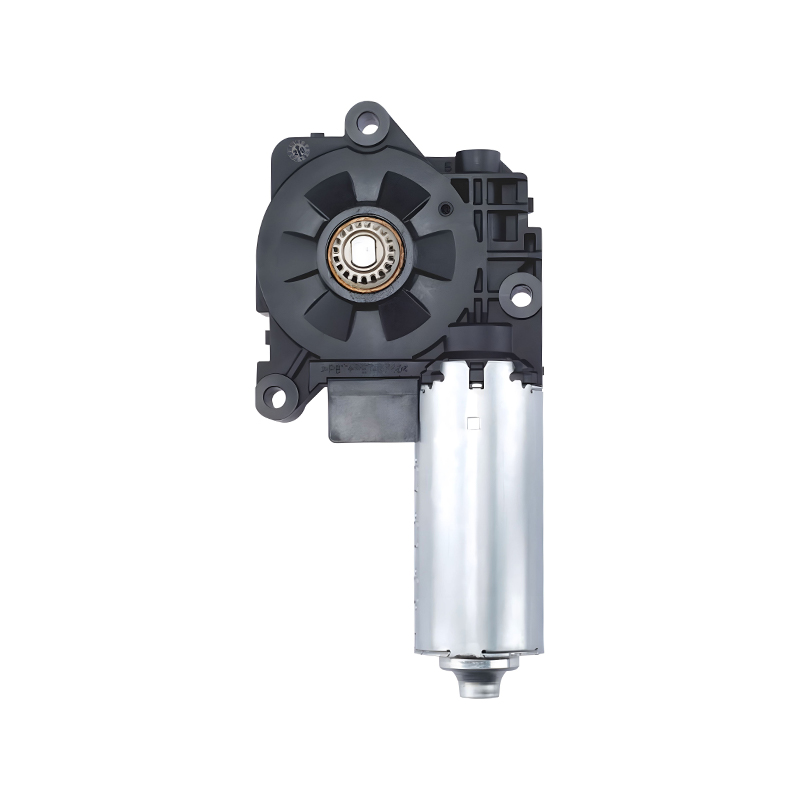One of the latest developments in this area is the implementation of an advanced surface coating process that significantly reduces friction loss across various automotive applications, particularly in compact systems such as the automotive window motor, window crank motor, and motor sunroof.

This surface coating is applied to critical internal components such as gears, shafts, and motor housings. The goal is to lessen direct metal-to-metal contact during operation, which is one of the primary sources of heat generation and wear in compact motor systems. With the new coating, these friction points are now treated with a micro-layer that acts as a long-lasting lubricant and protective barrier. This has proven especially beneficial in the case of the automotive window motor, where frequent up-and-down motion places stress on internal components over time.
The window crank motor, commonly used in both manual-assist and semi-automatic window systems, also benefits greatly from this improvement. The surface coating not only improves the smoothness of crank movement but also contributes to the motor's consistency in torque delivery. During repeated operation cycles, especially in regions with temperature bads, this new layer helps maintain stable performance by preventing thermal expansion from degrading internal alignment.
In recent field tests, motors with the new surface coating showed a measurable reduction in friction-induced energy loss compared to untreated models. The results were more noticeable in small-format motors such as the motor sunroof, which typically operates within limited space and under variable load conditions. With the coating applied to the gear interface and drive shaft, the motor sunroof demonstrated less resistance during open and close sequences, pilot to improved response time and a more fluid motion overall.
The improved coating technology also contributes to noise reduction, an increasingly important factor for in-cabin components. In the case of the automotive window motor, customers often associate excessive noise with aging or poor-quality parts. By lowering friction within the mechanism, the motor now operates with a quieter profile, improving user experience without requiring significant design changes.
From a production standpoint, the coating process integrates well into current assembly workflows. It can be applied at scale with small additional equipment, making it a cost-effective upgrade. The durability of the coating means that treated components maintain their protective layer even after thousands of operation cycles, a key consideration for long-life components like the window crank motor.
Beyond the technical gains, this development marks a shift toward smarter material usage in electric motor systems. For instance, in electric and hybrid vehicles, every watt of power matters. Reducing friction loss directly correlates to reduced energy demand. This is particularly relevant for the motor sunroof, which may seem like a secondary feature but still contributes to the overall power consumption profile of the vehicle.
It's worth noting that the benefits of this surface coating are not limited to brand-new product lines. Retrofitting older automotive window motor units with the treated parts has already shown promise in restoring some of the smoothness lost through years of wear. This opens possibilities for maintenance kits or refurbishment options that extend the service life of motors already in use.
Looking ahead, the research team is exploring how this coating can be adapted to other motion components within the vehicle. Early trials involving the window crank motor and other rotating parts suggest a wide range of potential applications. Combined with digital motor control improvements, this physical enhancement is another step toward creating more efficient, durable, and responsive automotive motor systems.
In summary, reducing friction through an innovative surface coating process has brought tangible advantages across several key motor categories. Whether in a fast-moving automotive window motor, a manually assisted window crank motor, or a compact motor sunroof, the improvements are measurable and impactful. This innovation not only supports performance gains but also reflects a growing emphasis on long-term reliability and smarter engineering.
Your email address will not be published. Required field are marked*